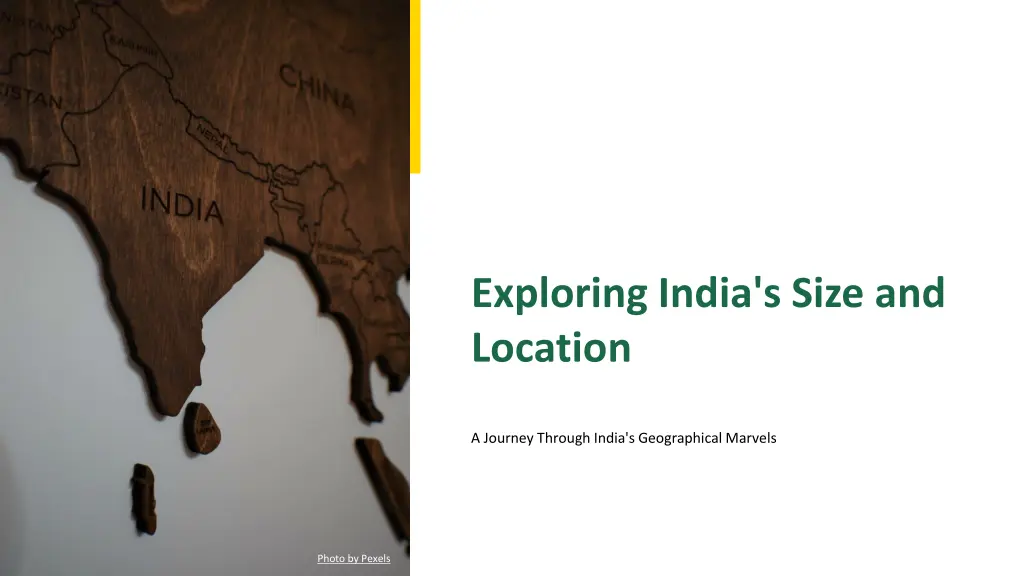
India's Geographical Marvels: A Journey Through Size and Location
Explore the vast and diverse geography of India, from its unique position in the Northern Hemisphere to the natural wonders such as the Himalayas, rivers, and deserts. Learn about India's socio-economic progress and its global significance, making it a key player in geopolitics. Dive into the rich history and cultural heritage of one of the world's oldest civilizations, poised to become a leading global power.
Download Presentation

Please find below an Image/Link to download the presentation.
The content on the website is provided AS IS for your information and personal use only. It may not be sold, licensed, or shared on other websites without obtaining consent from the author. If you encounter any issues during the download, it is possible that the publisher has removed the file from their server.
You are allowed to download the files provided on this website for personal or commercial use, subject to the condition that they are used lawfully. All files are the property of their respective owners.
The content on the website is provided AS IS for your information and personal use only. It may not be sold, licensed, or shared on other websites without obtaining consent from the author.
E N D
Presentation Transcript
Exploring India's Size and Location A Journey Through India's Geographical Marvels Photo by Pexels
01 Introduction to India's Geography Table of Contents 02 India's Size and Extent 03 Geographical Features 04 Socio-Economic Progress 05 Conclusion
1 Introduction to India's Geography Understanding India's Unique Position India lies entirely in the Northern Hemisphere, extending between latitudes 8 4'N and 37 6'N and longitudes 68 7'E and 97 25'E. The Tropic of Cancer (23 30'N) divides India into almost two equal parts, influencing its climate and geography. The Andaman and Nicobar Islands and Lakshadweep are located in the Bay of Bengal and Arabian Sea, respectively. The southernmost point of India, Indira Point, was submerged duringthe 2004 Tsunami. Photo by Pexels
2 India's Size and Extent A Vast and Diverse Land India covers an area of 3.28 million square km, accounting for 2.4% of the world's total geographical area. India is the seventh largest country in the world, showcasing its vastness and diversity. India has a land boundary of about 15,200 km, with a coastline of 7,516.6 km including its islands. Bounded by young fold mountains in the northwest, north, and northeast, India tapers southward into the Indian Ocean. Photo by Pexels
3 Geographical Features Natural Wonders of India India is surrounded by the majestic Himalayas in the north, providing natural protection and influencing climate. The Arabian Sea to the west and the Bay of Bengal to the east define India's extensive coastline. India's rivers like the Ganges and plains are vital for agriculture and civilization. The Thar Desert and Deccan Plateau add to India's diverse geographical features. Photo by Pexels
4 Socio-Economic Progress India's Journey Through Time India is one of the world's oldest civilizations, with a rich history and cultural heritage. India has made significant progress in agriculture, becoming a major global producer. The country has seen remarkable industrial growth, contributing to its economic development. India is at the forefront of technology, with advancements in IT and space exploration. Photo by Pexels
5 Conclusion India's Global Significance India has played a significant role in shaping world history throughits culture and innovations. India's diverse culture and traditions make it a unique and vibrantnation. India's strategic location in Asia makes it a key player in global geopolitics. With continued progress, India is poised to become a leading global power. Photo by Pexels
